
In Lesson 2 you will be introduced to an extensive vocabulary on the topic of Ukrainian foods. Using this vocabulary, you will review three cases of nouns used as follows:
1. Знахідний відмінок – as the direct object of a verb
2. Місцевий відмінок – after the preposition у/в when indicating an immovable (static) location.
3. Орудний відмінок – after the preposition з.
Добрий вечір! Good evening!
Чудово! Great! Wonderful!
|
Іменники: Місцевий відмінок
Nouns: Locative Case |
In Unit XI the Locative Case is used to indicate one’s location in a house. You will recall that this case is always used with the preposition у/в (in).
Nouns which are used in the Locative Case change endings as follows:
Чоловічий рід – (masculine) (inanimate)
Consonant + і: журнал --- в журналі
Жіночий рід – (feminine)
a changes to і: школа --- у школі (school)
я changes to і: умивальня --- в умивальні (washroom)
ія changes to ії: Британська Колюмбія --- в Британській Колюмбії
Середній Рід – (neuter)
о changes to і: дерево --- на дереві (tree)
 |
У тексті ми чуємо: |
| Галино, я вже вдома. А де ти? |
 |
|
Я тут, у кухні.
|

|
|
| А де вони? |
 |
|
Вони там, у вітальні.
|
 |
|
The questioning phrase Де...? (Where?) is used to create the question for each of the sentences given above.
|
Знахідний відмінок
Accusative Case |
In Unit XI the Accusative Case is used as the direct object of the verb варити (to cook). You will hear more about this verb in the following lesson. Note that the verb варити is used in relation to foods which are being cooked.
 |
У тексті ми чуємо: |
Я варю борщ і вареники. |
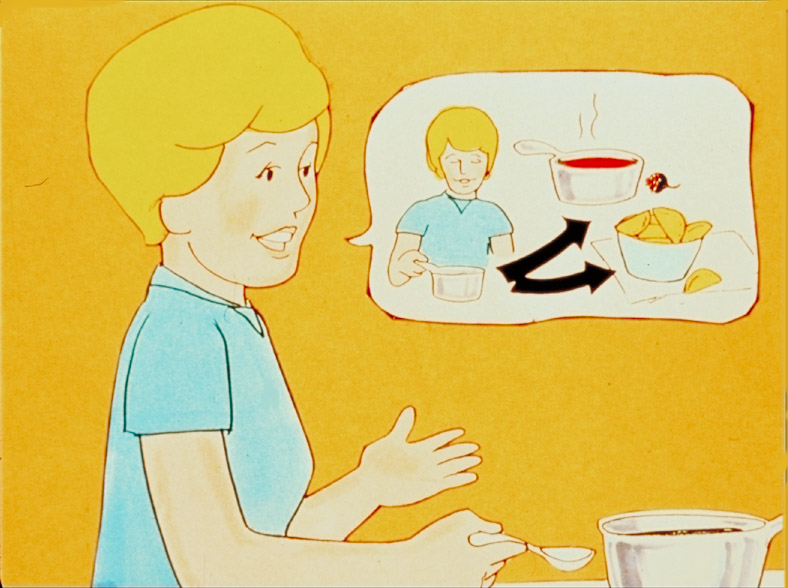 |
|
Чоловічий рід (masculine) (inanimate)
no change: борщ = борщ
Жіночий рід (feminine)
а changes to у: морква --- моркву
я changes to ю: картопля --- картоплю
Середній рід (neuter)
no change: молоко = молоко
Множина (plural)
no change: вареники = вареники
Їжа
Їжа, or food is a popular topic of conversation in many circles, especially if the
foods are connected to family experiences and cultural background. The
exercises below will help you to learn the Ukrainian names of some common
foods.
 Cultural Considerations Cultural Considerations
The terms used for some Ukrainian foods may vary. For example, in some homes, Ukrainian dumplings might be called пироги (pyrohy, perogies) while in others, they are called вареники (varenyky). The term пироги remains a well-known term in Canada, but in Ukraine this word commonly refers to baked pies (such as apple or cherry pies). The term вареники is derived from the verb варити (to boil, to cook), so this term more accurately describes the process of preparation. Just talking about вареники makes most people hungry!
XI. Exercise 2.i.
In the following three exercises, match the names of the foods to the pictures given. Use your dictionary to help you complete the exercises.

|
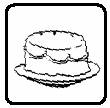
|

|
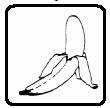
|
1. ___________ |
2. ___________ |
3. ___________ |
4. ___________ |
|
|
|
|
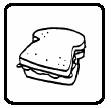
|
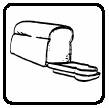
|
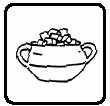
|
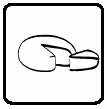
|
5. ___________ |
6. ___________ |
7. ___________ |
8. ___________ |
|
|
|
|
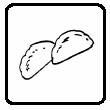
|
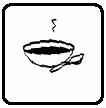
|

|
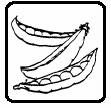
|
9. ___________ |
10. ___________ |
11. ___________ |
12. ___________ |
|
|
|
|
|

|
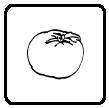
|
|
|
13. ___________ |
14. ___________ |
|
|
|
|
|
Їжа |
| перець |
чай |
вареники |
борщ |
хліб |
банан |
мед |
| сандвіч |
буряк |
торт |
сир |
цукор |
помідор |
горох |
|
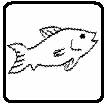
|
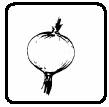
|
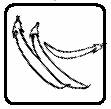
|
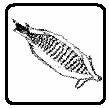
|
1. ___________ |
2. ___________ |
3. ___________ |
4. ___________ |
|
|
|
|
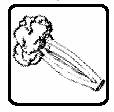
|

|
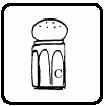
|
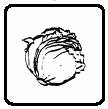
|
5. ___________ |
6. ___________ |
7. ___________ |
8. ___________ |
|
|
|
|
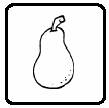
|
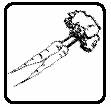
|
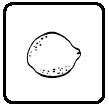
|
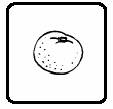
|
9. ___________ |
10. ___________ |
11. ___________ |
12. ___________ |
|
|
|
|
Їжа |
| селера |
сіль |
риба |
грушка |
морква |
цитрина |
|
| цибуля |
фасоля |
капуста |
помаранча |
кукурудза |
салата |
|
|
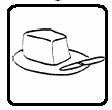
|

|
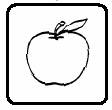
|

|
1. ___________ |
2. ___________ |
3. ___________ |
4. ___________ |
|
|
|
|

|
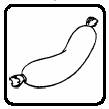
|

|

|
5. ___________ |
6. ___________ |
7. ___________ |
8. ___________ |
|
|
|
|
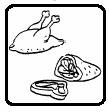
|
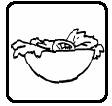
|
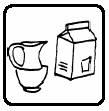
|
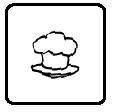
|
9. ___________ |
10. ___________ |
11. ___________ |
12. ___________ |
|
|
|
|
|

|
|
|
13. ___________ |
|
|
|
|
|
Їжа |
| кава |
масло |
булочка |
яблуко |
вода |
ковбаса |
яйце |
яйця |
| |
морозиво |
молоко |
м'ясо |
сметана |
салата |
картопля |
|
XI. Exercise 2.ii.
Do the word search below. You need to find at least fourteen items. Write the words which you've found in the lines beneath the word search.
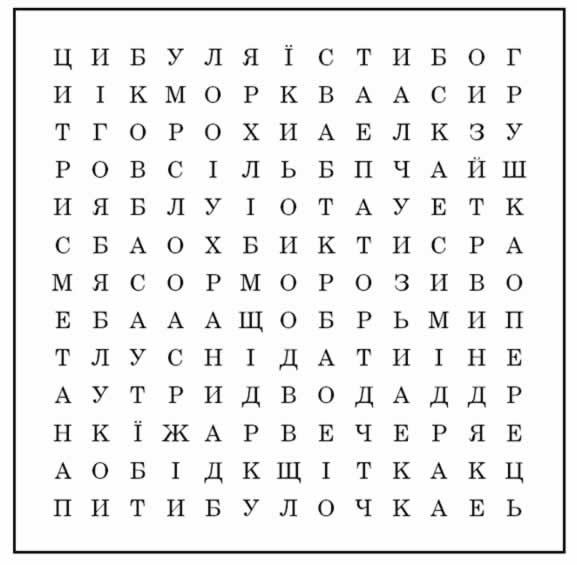
1. |
__________________________ |
8. |
__________________________
|
2. |
__________________________ |
9. |
__________________________
|
3. |
__________________________ |
10. |
__________________________
|
4. |
__________________________ |
11. |
__________________________
|
5. |
__________________________ |
12. |
__________________________
|
6. |
__________________________ |
13. |
__________________________
|
7. |
__________________________ |
14. |
__________________________
|
XI. Exercise 2.iii.
Categorize the foods from the previous exercises in the spaces provided below:
 |
|
Городина (vegetables)
1. ________________
2. ________________
3. ________________
4. ________________
5. ________________
|
6. ________________
7. ________________
8. ________________
9. ________________
10. ________________
|
 |
|
Садовина (fruit)
1. ________________
2. ________________
3. ________________
4. ________________
5. ________________
|
 |
|
Молочні продукти (dairy products)
1. ________________
2. ________________
3. ________________
4. ________________
5. ________________
|
 |
|
М’ясні продукти (meat, protein)
1. _________________
2. _________________
3. _________________
4. _________________
|
 |
|
Напої (refreshments)
1. ______________
2. ______________
3. ______________
|
 |
|
Десерти (desserts)
1. ______________
2. ______________
3. ______________
|
 |
|
Готова їжа (prepared foods)
1. _______________
2. _______________
3. _______________
4. _______________
|
XI. Exercise 2.iv
Знахідний Відмінок – Answer the questions in full sentences using the appropriate case endings.
неділя |
понеділок |
вівторок |
середа |
четвер |
п'ятниця |
субота |
|
1
горох |
2
борщ |
3
риба |
4 |
5
морозиво |
6
сандвіч |
7
м'ясо |
8 |
9
капуста |
10 |
11
морква |
12
вареники |
13
|
14
салата |
15
хліб |
16 |
17 |
18 |
19 |
20
мед |
1. |
Що ви хочете їсти в неділю? |
|
_________________________________________________________
|
2. |
Що хлопці хочуть їсти в суботу? |
|
_________________________________________________________
|
3. |
Що ти хочеш їсти в понеділок? |
|
_________________________________________________________
|
4. |
Що баба хоче їсти в п'ятницю? |
|
_________________________________________________________
|
5. |
Що дівчата хочуть їсти в четвер? |
|
_________________________________________________________
|
6. |
Що ми хочемо їсти в середу? |
|
_________________________________________________________
|
7. |
Що учитель хоче їсти у вівторок? |
|
_________________________________________________________
|
|
Орудний відмінок
Instrumental Case |
You will recall that the Instrumental Case is used with the preposition з (with).
Noun endings in the Instrumental Case are given below.
Чоловічий рід
й changes to єм: чай --- з чаєм
ь changes to ем: перець --- з перцем
consonant + ом: мед --- з медом
Жіночий рід
а changes to ою: вода --- з водою
я changes to ею: картопля --- з картоплею
ія changes to єю: Марія --- з Марією
Середній рід
о changes to ом: масло --- з маслом
е changes to ем: яйце --- з яйцем
XI. Exercise 2.v
Орудний відмінок - Answer the questions in full sentences using the appropriate case endings.
1. |
2. |
3. |
4. |
5. |
 |

|

|

|

|
|
|
|
|
|
6. |
7. |
8. |
9. |
10. |

|

|

|

|

|
1. |
З чим чоловік любить пити каву? |
|
_________________________________________________________
|
2. |
З чим дівчина хоче пити чай? |
|
_________________________________________________________
|
3. |
З чим ви любите їсти булочку? |
|
_________________________________________________________
|
4. |
З чим ти любиш їсти сандвіч? |
|
_________________________________________________________
|
5. |
З чим ви любите їсти сіль? |
|
_________________________________________________________
|
6. |
З чим вона любить їсти перець? |
|
_________________________________________________________
|
7. |
З чим діти люблять їсти ковбасу? |
|
_________________________________________________________
|
8. |
З чим ти любиш їсти селеру? |
|
_________________________________________________________
|
9. |
З чим я люблю їсти капусту? |
|
_________________________________________________________
|
10. |
З чим ти любиш їсти салату? |
|
_________________________________________________________
|
You will recall from your English courses that adjectives are words which describe nouns: great weather, shaggy dog, handsome man, pretty woman. Colors are also adjectives, as in the following phrases: blue sky, brown eyes, yellow corn, white snow.
In English, nouns are not gender specific. The addition of adjectives to describe nouns becomes a very simple process, as in the examples given above. In Ukrainian, nouns are gender specific and as a result, the adjectives which modify the nouns must agree in gender (masculine, feminine, neuter) and in number (singular, plural). Кольори - Colours

The colours given above appear in the masculine gender, because they modify the masculine noun колір (colour):
помаранчевий колір --- зелений колір --- білий колір --- чорний колір --- синій колір --- жовтий колір --- червоний колір --- пурпуровий колір --- коричневий (брунатний, бронзовий*) колір --- рожевий колір
* Deep brown is коричневий or брунатний, while bronze is бронзовий. In Ukrainian, adjectives (such as colours used to describe nouns) take on the gender of the noun which they modify. Some examples of gender agreement are given below.
Masculine: жовтий банан; червоний буряк
Feminine: зелена грушка; помаранчева морква
Neuter: біле молоко; бронзове яйце
Plural: червоні суниці; зелені грушки
As you will note from the examples, masculine color adjectives end in ий, feminine adjectives end in а, neuter adjectives end in е, and plural adjectives end in і. All colors with the exception of cиній (blue) have the same endings. Синій is the soft ending color adjective and its respective endings are:
masculine - ій: синій підручник
feminine - я: синя книжка
neuter - є: синє авто
The questioning phrase used to ask about an object’s color is: Якого кольору ....?
Якого кольору банан? –Банан (є)* жовтий.
Якого кольору грушка? – Грушка зелена.
Якого кольору молоко? – Молоко біле.
Якого кольору банани? - Банани жовті.
* Recall that in Ukrainian this verb is understood, therefore it is omitted. XI. Exercise 2.vi
Please answer the following questions using correct adjectives with gender appropriate endings. Keep in mind that although the word сіль (salt) ends in ь, it is a feminine noun (one of the exceptions).
1. |
папір |
_______________ |
6. |
кукурудза |
_______________ |
2. |
молоко |
_______________ |
7. |
сіль |
_______________ |
3. |
яйця |
_______________ |
8. |
суниці |
_______________ |
4. |
салата |
_______________ |
9. |
виноград |
_______________ |
5. |
помідор |
_______________ |
10. |
сир |
_______________ |
|








 Cultural Considerations
Cultural Considerations

























































